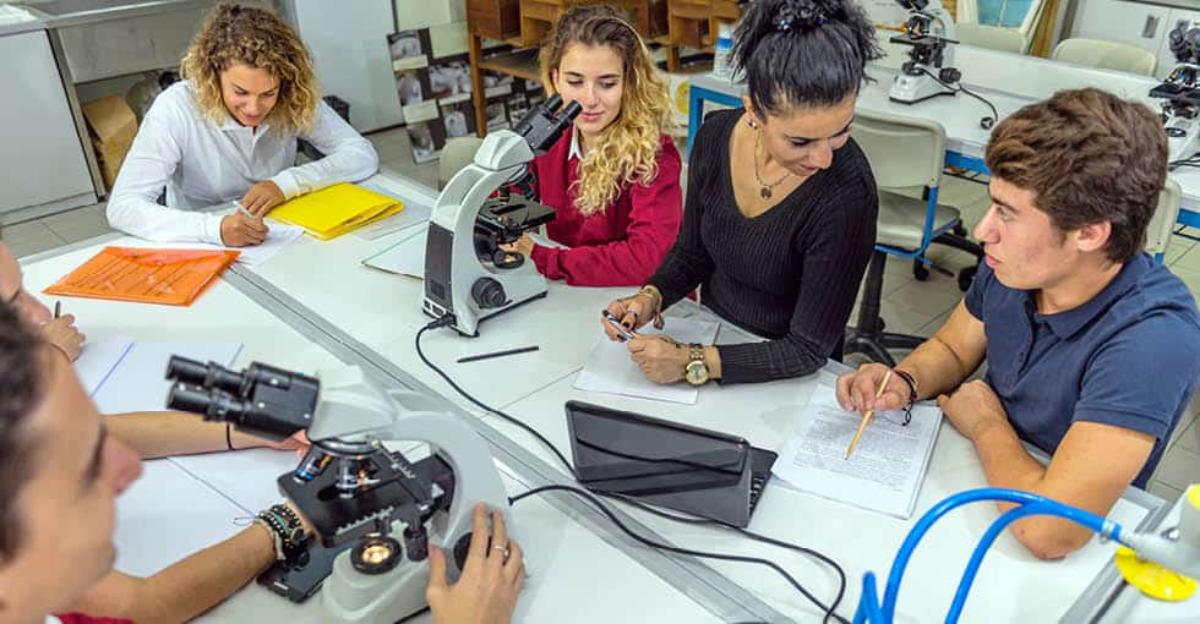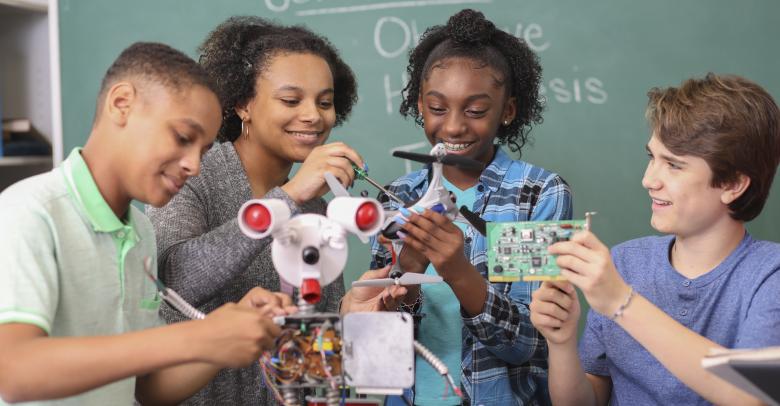Jobs in STEM — science, technology, engineering, and mathematics — are on the rise. According to the National Science Foundation, science and technology jobs are increasing at a rate of 18.7%; the average for all fields is 14.7%. That translates to thousands more jobs in STEM than in other fields over the next decade.
It’s not just that STEM jobs will be more plentiful, however: it’s that they’ll pay off. According to another study, STEM grads earned $10,000 more than other college graduates in annual income the year they graduated. The average annual income for those in STEM careers was $15,000 higher than the average of those in other careers.
Studies have found that students who learn about careers in middle school are far more likely to plan out their high school path in order to take the classes that they need to be successful. Middle school is the perfect time to start focusing on these career paths by letting students explore options with their teachers and peers. Middle school is also when students most deeply enjoy learning about and exploring their own personality, capacity, and capabilities.
Unfortunately, many middle school teachers may feel ill-equipped to provide students with relevant and informative STEM learning opportunities. So how can you produce content that is not just fun, but engaging and more deeply meaningful — content that can spark passion and interest strong enough to stand the test of time?
School Specialty, featuring Delta Education and Frey Scientific, are uniquely positioned to help all teachers with over 10,000 product solutions to make STEM a part of every students’ learning experience. Moreover, their Ideas and Resources section can help by providing lesson plans, whitepapers, and model classrooms, so you aren’t constantly re-inventing the wheel. Below are some ideas that can get you started on your path to STEM-teaching fluency!
1. Microscopes, microscopes everywhere!
One of the best tools you can use to get middle-school students invested in science is to give them a new tool, and a certain degree of freedom: sometimes the very best lesson is to ask students to bring in a variety of different natural items and materials such as feathers or cloth, and help them examine them up close. Close the lesson by asking students in what careers might they use a microscope, and have a handout prepared on several career options for them to look at. By closing rather than opening with career information, you subtly encourage your students to consider which professions engage in an activity that they have just enjoyed.
You can use a digital microscope like the Frey Scientific Digital Compound Microscope with Built-In Camera to save images or project them so that all students can view them at once. This is an especially useful tool for younger students who are still practicing their microscopy skills. For your students who are able to handle the focus feature, you might try a simple tripod 10X magnifier such as this one.
2. Inquiry Investigations
Innovating Science is a line of labs that includes teacher instructions and enough materials for 30 students. Though these are virtual labs, they foster the spirit of inquiry and have some very engaging modules including forensic ones that are all well-suited to career exploration.
These kits are great for the busy teacher: everything is in place for you to create a module that is fascinating, exciting, and career-oriented. In order to assure that students connect what they have learned to potential careers, include a unit of career exploration, where you discuss in greater depth the prerequisites such a career requires, or invite a professional from the field to discuss their day-to-day work-life with your students.
3. Drones and Robotics
Got a few rocket scientists in your class? They might be interested in the PCS Edventures Drone Designers: Exploring STEAM Careers Complete Program, Drone Building Kit which produces other complete STEM modules / projects as well. Robotics clubs and teams are popping up in middle schools and high schools all across the country because of how much fun they are to create and program. Consider a robotics unit in your tech-ed or science classroom, or a robotics club!
Many teachers who feel perfectly comfortable with biology and chemistry shy away from pure technology projects in the science classroom: but if not you, who? STEM is grouped together more and more often, and you will have many students who are deeply invested in the ‘technology’ aspect of STEM. With complete modules, you will be able to plan these units with confidence.
4. STEM Kits
Try the United Scientific STEM Kits for an easy, fun, and comprehensive way to explore science concepts. Materials for the various activities (with model and inquiry investigational paths) are included and can accommodate up to 40 students. Structured, guided and open investigations, at introductory, intermediate and advanced levels make the investigations accessible to all students. Students who have had enough of sitting still will love the active learning and movement found in these kits — and evidence supports that they will learn better, when they are moving.
Your students need STEM, and you need a simple and straightforward way to include STEM career concepts in your curriculum. Let School Specialty help your students explore their future career through STEM educational materials!






Leave a Reply